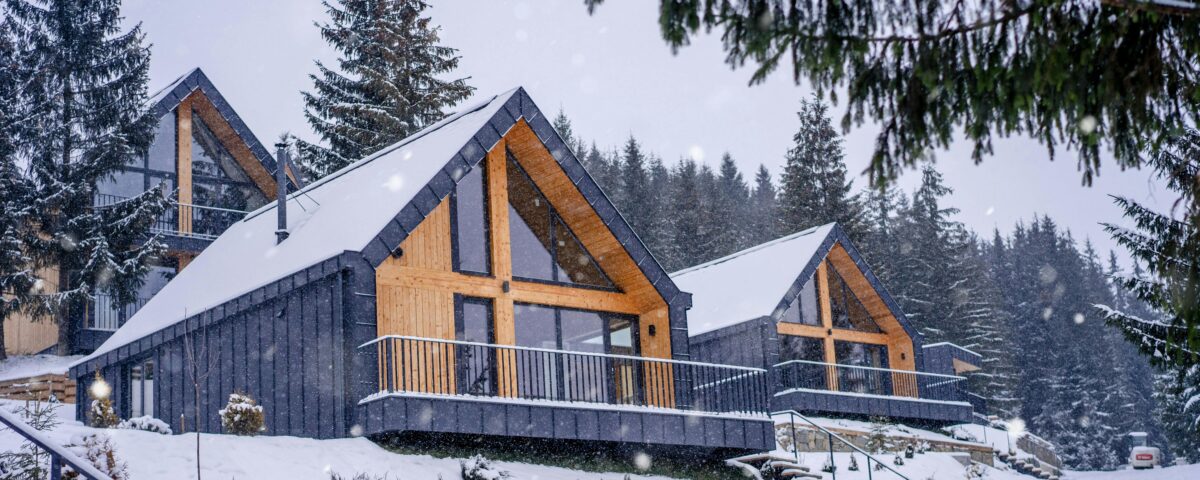
Sustainable Design: Eco-Friendly Building Ideas.
November 15, 2024
Urban Home Designs: Practical Tips for Pakistani Homes
November 18, 2024As winter approaches, ensuring your home is ready to handle the seasonal changes is crucial for comfort and efficiency. In Pakistan, winter conditions vary significantly depending on the region, ranging from freezing temperatures in the northern areas to mild, damp weather in the south. Regardless of your location, winterizing your home can save energy, enhance comfort, and protect your property from potential damage. Here’s a detailed guide to help you prepare your home for winter while ensuring sustainable practices and modern construction techniques.
1. Understanding Pakistan’s Winter Climate
Pakistan experiences diverse winter climates due to its geographical variations:
- Northern Regions: Areas like Gilgit-Baltistan and Swat see heavy snowfall and freezing temperatures. Homes here require robust insulation and heating systems.
- Plains and Urban Areas: Cities like Lahore, Islamabad, and Karachi experience mild winters with occasional fog or humidity. Damp-proofing and energy-efficient solutions are essential here.
- Coastal Regions: Karachi and Gwadar face milder winters, but protection against coastal humidity remains a priority.
Understanding your region’s specific winter conditions can help tailor your winterization efforts effectively.
2. Essential Winterizing Tips for Homes in Pakistan
a. Insulating Your Home
Proper insulation is the cornerstone of a winter-ready home. Effective insulation reduces energy consumption and maintains warmth during cold months.
- Walls and Roof Insulation: Install thermal insulation materials like foam boards or mineral wool to reduce heat loss. For an eco-friendly solution, consider sheep wool insulation. Refer to resources like Energy.gov for detailed guidance on effective insulation techniques.
- Windows and Doors: Double-glazed windows or weather stripping around doors can minimize drafts and improve thermal efficiency.
- Floor Insulation: In colder areas, consider underfloor insulation to keep your home warm from the ground up.
Visit Develoscape Architects and Consultants for professional advice on cost-effective insulation solutions.
b. Sealing Air Leaks
Air leaks can undermine your insulation efforts, leading to energy wastage. Inspect the following areas:
- Window Frames: Use caulk or weatherstripping to seal gaps. Bob Vila offers excellent tutorials on sealing air leaks effectively.
- Door Thresholds: Install door sweeps to block drafts.
- Electrical Outlets: Use foam gaskets to prevent air leakage through sockets.
c. Heating Systems
Investing in efficient heating systems can significantly enhance comfort during winter. Consider these options:
- Electric Heaters: Ideal for urban homes with reliable electricity.
- Gas Heaters: A popular choice in Pakistan, particularly in regions with piped gas supply. National Energy Technology Laboratory (NETL) provides insights into energy-efficient gas heating systems.
- Solar Heating Systems: Although an upfront investment, solar solutions offer long-term savings and are eco-friendly.
d. Protecting Pipes
Freezing temperatures can cause water pipes to burst, leading to costly repairs. Take these precautions:
- Pipe Insulation: Wrap pipes in foam sleeves or specialized insulating materials.
- Draining External Pipes: Ensure outdoor taps and pipes are drained to avoid freezing.
- Heating Tape: In extremely cold regions, apply heating tape to pipes prone to freezing.
3. Winterizing for Damp and Humid Conditions
In areas like Karachi, winter humidity can lead to damp walls and mold growth. Here are some solutions:
- Damp-Proofing: Apply waterproof coatings or damp-proof membranes to vulnerable walls. The Home Depot offers a range of products for damp-proofing.
- Ventilation: Ensure proper ventilation in kitchens and bathrooms to reduce indoor humidity.
- Dehumidifiers: Use dehumidifiers to maintain optimal indoor air quality.
4. Sustainable Winterizing Practices
Adopting sustainable methods for winterizing your home can reduce environmental impact and energy bills:
- Green Insulation Materials: Use materials like cork or recycled denim for insulation.
- Energy-Efficient Windows: Opt for energy-rated windows to reduce heat loss. Learn more about energy ratings at Efficient Windows Collaborative.
- Solar Panels: Install solar panels to power your heating systems sustainably. For Pakistan-specific solutions, check resources from Alternative Energy Development Board (AEDB).
5. Roof and Gutter Maintenance
Winter rains and snowfall can cause damage to poorly maintained roofs and gutters:
- Roof Inspections: Check for damaged shingles, cracks, or leaks. This Old House provides practical tips for roof maintenance.
- Clean Gutters: Remove debris to ensure proper drainage.
- Snow Guards: In snowy areas, install snow guards to prevent sudden snow slides.
For expert roof maintenance services, contact Develoscape Architects and Consultants.
6. Winter-Ready Outdoor Spaces
If you have outdoor spaces, winterizing them ensures their usability and longevity:
- Patio Furniture: Cover or store furniture to protect it from moisture.
- Garden Preparations: Trim trees and bushes to prevent winter storms from causing damage.
- Driveways: Seal cracks in driveways to prevent water from freezing and expanding.
Explore more landscaping ideas at Better Homes & Gardens.
7. Energy Efficiency Upgrades
Enhancing energy efficiency not only reduces costs but also supports sustainability:
- LED Lighting: Replace incandescent bulbs with LEDs for energy savings. Learn about energy-efficient lighting from Energy Star.
- Smart Thermostats: Install programmable thermostats for efficient heating control.
- Insulated Curtains: Use heavy, thermal curtains to retain heat indoors.
8. Emergency Preparedness
Winter storms or prolonged power outages can catch you off guard. Be prepared with:
- Backup Power Supplies: Keep a generator or battery backup ready. Consumer Reports offers reviews of reliable generators.
- Emergency Kits: Stock up on essentials like blankets, batteries, and non-perishable food.
- First Aid Supplies: Ensure your first aid kit is well-stocked.
9. Budgeting for Winterization
Winterizing your home doesn’t have to break the bank. Prioritize high-impact areas first:
- Insulation
- Sealing air leaks
- Roof and gutter maintenance
For tailored winterization plans that fit your budget, consult with Develoscape Architects and Consultants.
10. Latest Winterizing Trends in Pakistan
Modern construction trends emphasize combining functionality with aesthetics. Here are some popular winterizing trends in Pakistan:
- Smart Home Technologies: Automate heating and lighting systems for efficiency. Explore options at CNET.
- Eco-Friendly Materials: Use sustainable materials for insulation and construction.
- Dual-Purpose Spaces: Design spaces that serve as cozy retreats during winter.
Conclusion
Winterizing your home is an investment in comfort, energy savings, and the longevity of your property. By understanding Pakistan’s diverse winter conditions and adopting the tips outlined above, you can ensure a warm and secure living environment. For professional assistance, visit Develoscape Architects and Consultants. With decades of experience in construction and architectural design, they can help transform your home into a winter haven.
Take the proactive step today to prepare your home for the cold months ahead, ensuring a cozy and hassle-free winter season.

